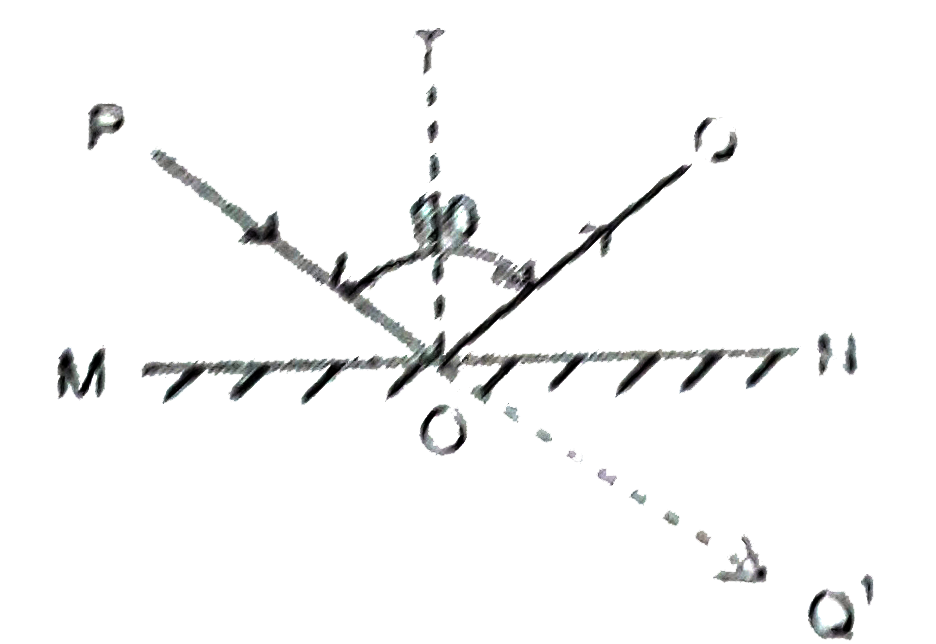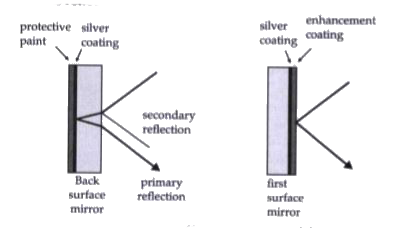When the light is reflected from the surface of the mirror, its speed and wavelength will
increases
decreases
remains same
may increase or may decrease
The correct Answer is:D
Step by step video, text & image solution for When the light is reflected from the surface of the mirror, its speed and wavelength will by Physics experts to help you in doubts & scoring excellent marks in Class 12 exams.
Updated on:21/07/2023Topper's Solved these Questions
Similar Questions
Answer the following questions:
Light of wavelength 5000 A propagating in air gets partly reflected from the surface of water. How will the wavelengths and frequencies of the reflected and refracted light be affected ?
View SolutionWhen a light ray is incident normally on the surface of a plane mirror, the reflected ray deviates through an angle of ________
View Solution
Knowledge Check
When light is reflected from a mirror a change occurs in its :
AphaseBfrequencyCwavelengthDspeedWhich of the following lies on the reflecting surface of the mirror?
ACentre of curvatureBFocusCPoleDFocal lengthIf a light ray is reflected from a mirror as shown in the figure, then
 Athe glancing angle of light ray is 45∘Bthe reflected light ray is perpendicular to the incident light ray.Cthe reflected light is deviated through an angle of 90∘DAll of the above
Athe glancing angle of light ray is 45∘Bthe reflected light ray is perpendicular to the incident light ray.Cthe reflected light is deviated through an angle of 90∘DAll of the above
A student holding a mirror in his hand, directed the reflecting surface of the mirror towards the Sun. He then directed the reflected light on to a sheet of paper held close to the mirror.
Which type of mirror does he have?
View SolutionIf a light ray is reflected from a mirror as shown in the figure, then

View SolutionWhen a ray of light passes from air medium to denser medium then its speed and wavelength
View SolutionFirst Surface Mirror:
Normally we use back surface mirrors. These are considered low precision mirrors because they actually have two reflecting surfaces. The first reflecting surface is the initial surface on the pane of glass where a small percentage of light is reflected off the surface. The second reflecting surface is the aluminium coating where a high percentage of light is reflected off the surface.

This dual reflection effect of a low precision mirror causes a loss of contrast and image distortion that is undesirable in high precision applications like rear projection systems, scanners and reflecting telescopes. In these cases good image quality is highly preferred, and this is where a front surface mirror is desired for clarity and single image reflection. First surface mirrors are quite common in professional optics. However, compared with back surface mirrors, they have the important disadvantage of being substantially more sensitive. The front surface may be touched, and a metal coating on the front surface is substantially more sensitive than a bare glass surface. For example, fingerprints can easily cause oxidation of the metal. Also, moisture or aggressive gases may cause oxidation of the mirror coating.
Light incident on back surface mirror suffers:
View SolutionWhen light is reflected from a surface it can be either regular reflection or diffuse reflection. The essential difference between regularly and diffusely reflecting surfaces is that
View Solution
